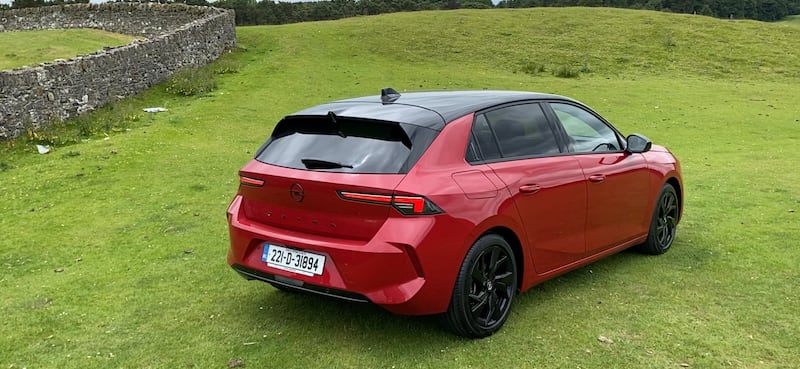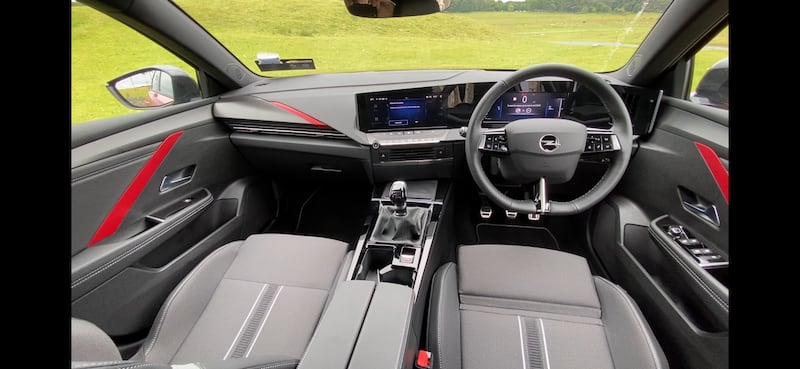You would think that Opel, launching a new and generally pretty conventional family five-door hatchback, would be on something of a hiding to nothing. After all, this is the week when Ford announced that the long-lived Focus would shortly be no more, with the end of production for both that car and the Saarlouis factory in which it’s built penciled in for 2025.
So this new Astra, however good, bad, or indifferent it might be, is in any case about to lose its greatest sparring partner. Since the Astra was first launched in 1992 (and its hatchback Kadett predecessors, which date back to 1979), it has been benchmarked against the Focus and its predecessor, the Escort, as well as the VW Golf.
This new Astra – the Astra L, as Opel internally codes all its cars alphabetically – marks something of a sea change. Not just stylistically, although it’s both more handsome and more striking than its rather apologetic-looking predecessor, but in engineering terms too. Not only is this the first new Astra since Opel left General Motors ownership and became part of the PSA Peugeot Citroen Group, and then latterly the Stellantis Group, but according to Opel it is also a proper, true Opel. Yes, it uses the same EMP2 platform and engines as its cousins at Peugeot, Citroen, and DS, but it has been styled and engineered entirely at Opel’s Russelsheim HQ (just outside Frankfurt). Whereas other recent Opels – Grandland, Mokka – have been subsumed to the diktats of the French brands, this Astra is apparently more of an equal among its peers.
It also has just the tiniest chink of possibility – Opel Ireland’s figures suggest that the craze for SUVs and crossovers, most notably the C-SUV segment for mid-sized cars, seems to be topping out. This corner of the market has expanded beyond all belief, but whether it’s because of rising fuel costs, price hikes by the carmakers for SUV models, or simply because of supply issues, there does at least seem to be a faint lull in the increase, if not yet any decrease.
Fintan O'Toole: Ireland has a proud history of opposing anti-Semitism
‘You have to realise it comes to an end’: But Johnny Sexton enjoying new phase as a coach after stellar career
Oasis in Cardiff: This was emotional. For the Manchester-Irish diaspora, it’s like family
Pricewatch: A sleeping passenger goes hungry on an Aer Lingus flight across the Atlantic

That opens up a sliver of opportunity for the Astra, a chance to remind people that before SUVs took over, these were the cars we all bought. And for good reason too – a five-door hatch is an eminently sensible purchase, generally mixing value, practicality, frugality and driving enjoyment in one package.
Does the new Astra do enough to convince buyers to back away from their SUV cravings, and re-embrace a five-door hatch? Possibly…
It does look good – that “Vizor” front end, pinched from the Mokka crossover, looks smart and gives the Astra a bluffly handsome nose. Our test car was in sporty SRI spec, so it came with black-finished alloy wheels and a contrast black roof that amped up the sense of smartness about the styling. Without question, this is a more confident-looking Astra.
Inside, there is both good and bad. There’s reasonable space – although anyone trading down from an SUV might bemoan a slight sense of tightness in the rear – but the front of the cabin is very comfortable, and for the most part the Astra exudes a sense of good quality. I say “for the most part” because there are some cheap and not-very-cheerful plastics on display, which do their best to spoil the mood.

The Astra is practical, though. There’s a very decent 422-litre boot, with an adjustable-height floor, out the back and in the cockpit there is a seemingly endless lineup of storage trays and bins, including a neat flock-lined one that pops out from under the centre of the dash.
That dashboard is dominated by two digital screens, with a 10-inch instrument panel and a 10-inch infotainment screen standard on all models. The updated software makes a huge difference compared to the similar screens in the Mokka and Grandland, and the displays now look richer and more pleasing to the eye, while the menu layout for the touchscreen is easier to fathom. There’s the major bonus of physical switches for the heating and air conditioning too, which makes them far easier to operate when on the move.
For now, the Astra will be available with just two engines – a 1.2-litre three-cylinder turbo petrol with 130hp, and a 1.5-litre four-cylinder turbo diesel with the same power output. There are two plug-in hybrid versions – with either 180hp or 225hp – but they’re not on Opel Ireland’s price lists for now, simply because the shortages in computer chip supplies mean that they’re harder to build, and so supply is tight.
Will that damage the Astra’s market chances? Possibly, but the 1.2 petrol as tested is still a good little engine. True, there will be those who say that nothing with an exhaust pipe should still be on sale, but then an all-electric Astra is on the cards, and should be on sale (supply issues allowing) by 2024. In the meantime, if offered a sweet-revving, decently punchy petrol engine that’s easily capable of averaging 4.8-litres per 100km on a given journey, well frankly I’d not turn up my nose at that.
Initially, the way the Astra drives seems to fail to live up to the sweetness of the engine. With light, slightly rubbery steering and a slightly firm low-speed ride it just seems kinda bland and not very interesting at first. It does cruise nicely, although there’s a good bit of tyre roar at motorway speeds. It’s not what you’d call thrilling, though.
However, when you get it on to a more demanding road, the Astra starts to come to life. Through a series of unforgiving corners on a tight and twisty back road, the Astra demonstrated exceptional fluidity and composure, easily dealing with sharp direction changes and proving itself to be utterly stable and sure-footed. That rubbery sensation to the steering never quite goes away, but while it prevents the Astra from being totally engaging for the driver, it doesn’t stop it being accomplished through the bends.
Enough to entice you away from an SUV? It ought to be, and if this hatchback isn’t enough, then wait until you see the handsome and hugely spacious (608-litre boot…) estate version which will arrive on Irish shores early next year.
What about the price? There’s more good news here – a base Astra 1.2-litre with 110hp in SC trim (pretty well-equipped with those screen, climate control, 16-inch alloys, cruise control and lane-keeping steering) starts from €27,995. Our 130hp SRI test car starts at €31,995. Those are reasonable prices, especially compared to SUV rivals which are rapidly heading towards €40,000 and beyond.
Maybe the five-door hatchback still has some life left in it?













